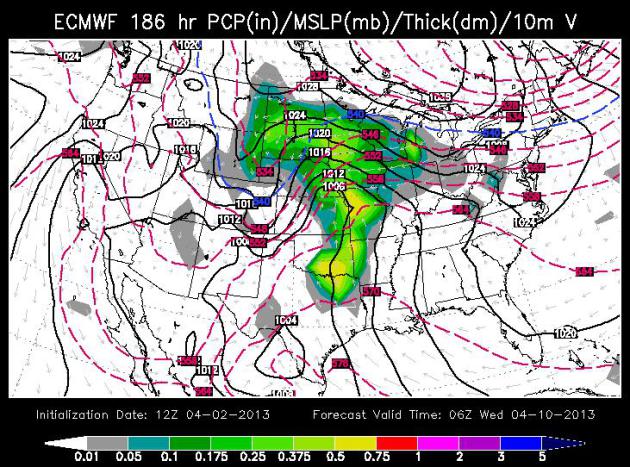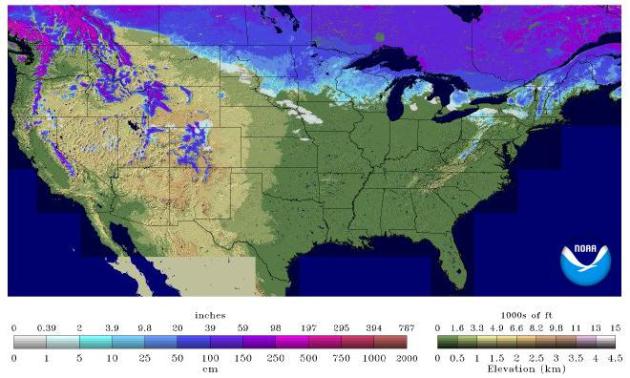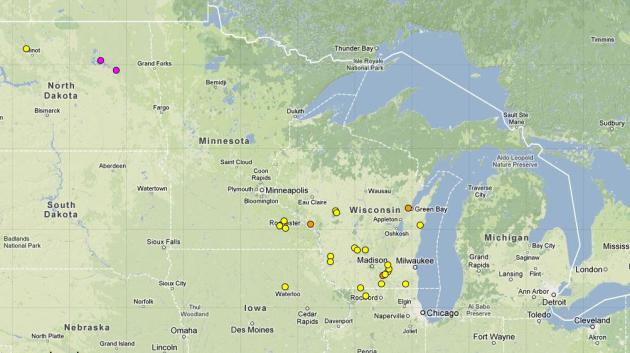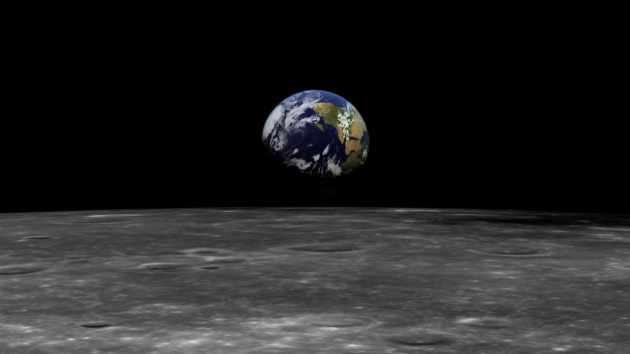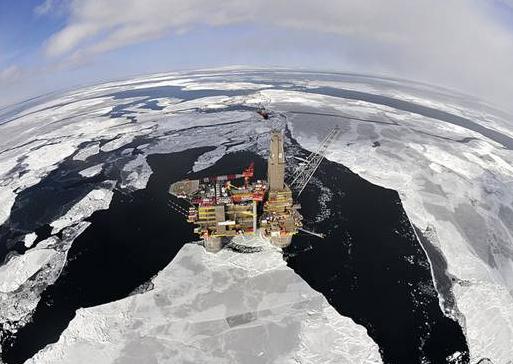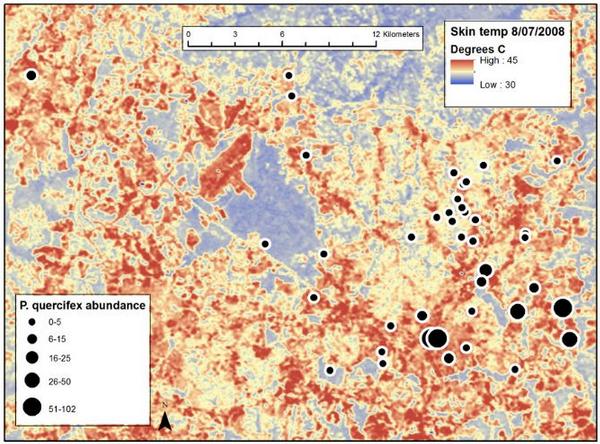Spring Paradox
I'm just the messenger, but I get emotional
about weather, just like everyone else. I want it to warm up, I want it
to rain (hard) and ease our long-term drought. I just don't want it to
happen in the next few weeks. The reason? River flooding.
NOAA data shows 4-7" of liquid water (snow water
equivalent) locked in the snow pack over west central and northwestern
Minnesota. Details below.
Trying to predict flooding is a science within a
science; as much art as science, to be honest. Hydrologists factor the
depth of ground frost, water content in the snow, the rate of expected
warming and any rain (which accelerates snow melt) into their models.
The risk still appears greatest for the Red
River, but residents living along the Mississippi and Minnesota Rivers
shouldn't let their guard down just yet.
None of us will take spring for granted this
year. It is spring, right? Temperatures top 50F today; it may be warm
& unstable enough for thunder Saturday. Skies dry on Sunday - more
significant heavy rain events shaping up for Tuesday, again Thursday of
next week; maybe 1" of liquid water (mixed with wet snow up north).
Old Man Winter is like the annoying uncle who just doesn't know when to go home.
Whispers of Spring. No tulips or daffodils blooming
anytime soon, but highs should top 50 today and Thursday; ECMWF model
guidance still hinting at upper 50s, even low 60s Saturday ahead of the
next frontal passage. Showers, possible thunder Saturday, with the main
event coming late Tuesday into Wednesday of next week, probably warm
enough for rain. We can only hope.
Shifting Gears. We're heading into a wetter pattern,
a storm in the upper atmosphere over the Desert Southwest forecast to
eject a series of storms northeastward across the Plains into the Upper
Midwest next week. A large north-south temperature contrast should set
the stage for potentially significant rains, possibly even mixing with
wet snow from North Dakota into northern Minnesota next week.
The Art Of River Flood Forecasting. I have a lot of
empathy for the hydrologists (river forecasters) at the National Weather
Service in Chanhassen. In spite of computer simulations predicting when
and where a river will crest is still as much art as science, as I
explain in today's edition of
Climate Matters: "
Springtime
can mean sandbagging and water woes for folks who live along rivers
and streams. If temperatures can gradually warm up, it can help ease
flood concerns. But there are many more factors to consider when trying
to forecast flood potential. Meteorologist Paul Douglas explains."
USA Snow Cover. Snow is on the ground over roughly
17% of the USA (lower 48 states), down from 47% of the USA back on March
3. Map above: NOAA.
Snow Water Equivalent. There's still a fair amount
of liquid water trapped in the snow pack over west central and
northwestern Minnesota, as much as 4-6" of water, according to
NOAA estimates. The potential for river flooding, especially Red River
Valley, will depend on a multitude of factors, including how quickly
frost leaves the ground, how rapidly temperatures warm, and whether warm
fronts are accompanied by significant rain, which would accelerate snow
melt and raise the odds of flooding.
Current Flooding. NOAA data shows some major
flooding in the Devil's Lake, North Dakota area, moderate flooding on
the Duck River near Green Bay, minor flooding near Rochester and across
southern Wisconsin. With warming temperatures and a wetter pattern
seemingly imminent I expect river and stream flooding to be on the
increase in the coming weeks.
Coldest March Since 2002. Not exactly
record-smashing, but a departure from our trend of milder Marches and
earlier springs since roughly 1998. Details from the
Twin Cities office of the National Weather Service: "
March
of 2013 will be remembered for one thing, cold. After having a March in
2012 that had temperatures that belonged more in April, this March went
the other direction as persistent cold air resulted in the Twin Cities,
St. Cloud, and Eau Claire all having their coldest March since 2002.
March also continued the trend started in February with Minnesota and
Wisconsin being stuck in a bit more of a snowy and wet pattern, with the
monthly snowfall total at St. Cloud putting them in as the 9th snowiest
March of all time with Eau Claire experiencing its 5th snowiest March
on record. The big storm this March occurred on the 4th and 5th, when a
system dumped over 10" of snow along the Minnesota and Wisconsin border.
There was a second snow storm that hit areas from Albert Lea through
Eau Claire the hardest on the 15th. Certainly by the time the first
significant that was observed the last few days of the month, it was a
welcome occurrence!
In the end, tempertatures across the region for March of 2013
were 5 to 10 degrees below normal, snowfall was 6-12+ inches above
normal (outside of southwest Minnesota), while melted precipitation was
nearly 1" above normal (outside southwest Minnesota). Again, the
southwest part of the state managed to watch the heaviest precipitation
stay north or east of them, and as a result, southwest Minnesota ended
up being the only part of the region to see below normal snowfall and
precipitation."
FEMA Frustrated By Drop In North Dakota Flood Policies. Not an encouraging trend, considering that major flooding is expected across the Red River Valley within the next few weeks.
The Bismarck Tribune has the story; here's the intro: "
As
North Dakota faces another possible major flood this spring, federal
officials are frustrated by the number of people in the state who lack
insurance for such a disaster. Along the Red River and its tributaries
in flood-prone Fargo and Cass County, the number of insurance policies
dropped by more than 40 percent from 2011-12, FEMA officials said.
Residents there have battled flooding for five of the last seven years.
“It’s an amazing phenomenon how people can go through these things,
then drop their flood insurance and try to buy it back in time,” FEMA
spokesman Dave Kyner said. “I guess that’s one of the most frustrating
things for us here.” Flood policies in all of North Dakota declined 32
percent, which coincided with a dry year throughout the state. Policies must be in effect for 30 days for flood damage to be covered..."
Torrential Rains Flood Argentina's Capital Killing 5. Amazing amounts of rain at Buenos Aires, as reported by Associated Press and
The Washington Post: "
Torrential
rains in Argentina’s capital have triggered flooding responsible for at
least five deaths. A record 6.1 inches (155 millimeters) of rain fell
in just two hours in Buenos Aires on Tuesday. That’s equal to all of
normal rainfall for April. The storm caused power outages, flooded
subway lines and turned the streets into rivers..."
Photo credit above:
Leonardo Zavattaro, Telam/Associated Press. "Cars
and garbage containers lay piled up after flash flooding caused damage
overnight in Buenos Aires, Argentina, Tuesday, April 2, 2013.
According to city officials, at least five people were killed during
the heavy rains."
Arctic Warming Blamed For Last Year's Warmth And This Year's Chill.
Omaha.com has a good explanation of how changes in the Arctic may be having a domino effect at lower latitudes; here's an excerpt: "...
The
Arctic is warming at two to three times the rate of the rest of the
globe. As it warms, there's less contrast between the temperature of
Arctic air and the atmosphere farther south. As a result, the jet stream
weakens. A strong jet stream tends to flow fairly directly, west to
east. A weakened jet meanders at a slower pace, looping north and
south.
The consequences:
» A weakened jet is more likely to form atmospheric blocks, which tend to create “stuck” weather patterns.
» The meandering allows Arctic air to plunge southward or warm air to surge northward.
» Combined, these two factors stack the odds in favor of prolonged hot or cold spells and contribute to stalled storm systems..."
Tornadoes And Sequesters. Will the "sequester" and budget cuts impact the quality of severe storm and tornado forecasting?
WJLA-TV's Bob Ryan takes a look - here's an excerpt: "...
This
week NOAA, also the parent agency for the National Weather Service
(NWS), announced a hiring freeze at a time when its vacancy rate is
already around 10%. I understand that this number is near 20% for the
Washington DC area NWS Office. At this point, pause and consider public
safety. As we enter the severe weather/tornado seasons, the Sequester
has forced the hand of our NOAA management and possibly jeopardized the
American public's safety, stifled scientific capacity, obliterated
morale within NOAA/NWS, and dampened hopes for the next generation of
federal meteorological workforce. Beyond safety, we have increasingly
clear evidence that weather is important to our economy (see commentary
by me and Nancy Colleton on the "next Commerce Secretary" at http://www.huffingtonpost.com/nancy-colleton/the-next-secretary-commerce_b_2807671.html).
Now to be clear, I know, personally, the senior level managers at
NOAA/NWS very well. I know they will do everything within their power to
adjust and mitigate impact. This commentary is really not about them.."
6, 7-Day Storm Forecasts As Good As Closer Ones A Decade Ago.
Forecasting hurricane intensity is still terribly difficult, but NHC is
doing an increasingly good job with the predicted "forecast cone"
showing the expected path of hurricanes. Meteorologist Eliot Kleinberg
reports at
The Palm Beach Post: "
Six-
and seven-day National Hurricane Center forecasts conducted “in house”
in 2012 had about the same margin of error that four- and five-day
forecasts a decade ago, center senior specialist Dan Brown told a
Thursday session of this week’s National Hurricane Conference. Errors
were 240 nautical miles at Day Six and 300 nautical miles at Day Seven,
which is “actually a pretty good forecast,” Brown said. But he noted
that positions that far out are of limited value; even a 240-mile error
margin on either side of a storm is a lot of ocean. The longer-range
forecasts are part of a suite of products the hurricane center is
working on, Brown and hurricane center colleagues said. Among them: a
graphic showing the potential arrival time of tropical storm force
winds — “we heard loud and clear that this was a product that everybody
wanted,” specialist Robbie Berg said — and a graphic showing predicted
wind speeds over certain areas..."
The Urban Heat Island Could Be Attracting Bugs.
It's no secret cities and suburbs can be 5-15F warmer than outlying
suburbs and farmland, and this has numerous consequences, including the
potential to attract new and exotic bugs. Here's an excerpt from
The Atlantic Cities: "...
The
study is kind of a groundbreaking effort in the research niche where
insects, cities and weather intersect. As the scientists note:
Urbanization of an area changes the species that dwell in it.
Previous studies have analyzed these effects in terms of loss of
resources or changes to habitat, but this is the first research to
focus on the effects of "heat islands" created in cities. Meineke
explains that, "Urban warming can lead to higher insect pest abundance,
a result of pest acclimation or adaptation to higher temperatures."
The study concludes that since current urban warming is
similar in magnitude to the higher temperatures predicted by global
warming in the next fifty years, their results may indicate potential
changes in pest abundance as natural forests also grow warmer..."
Place Your Bets. This is from page 80 of my bootleg
copy of the 2013 Old Farmer's Almanac, kept under lock and key in my
desk drawer. Cool and dry? I hope not, for the sake of our perpetual
drought. I'm betting on considerably wetter than last year, but also
cooler and less humid, with more severe T-storms than we experienced in
2012.
Can We Patent Life? Here's an excerpt of an intriguing, if troubling story from
The New Yorker: "...
As
they do, we edge closer to one of modern science’s central goals: an
era of personalized medicine, in which an individual’s treatment for
scores of illnesses could be tailored to his specific genetic
composition. That, of course, assumes that we own our own genes. And
yet, nearly twenty per cent of the genome—more than four thousand
genes—are already covered by at least one U.S. patent. These include
genes for Alzheimer’s disease, colon cancer, asthma, and two in
particular—BRCA1 and BRCA2—that are highly associated with breast
cancer. Myriad Genetics, a company that specializes in molecular
diagnostics, holds the rights to those two genes. Anyone conducting an
experiment on them without a license can be sued for infringement of
patent rights. This means that Myriad can decide what research is
carried out on those genes, who can do that research, and how much any
resulting therapy or diagnostic test will cost. The same holds true for
other genes and for any pharmaceutical company, scientist, or
university that holds patents similar to those held by Myriad....
America Is Watching More TV Than Ever, Just Not On TV.
The trends are consistent - we're increasingly tapping the Internet
(and mobile devices) to get our TV fix. Here's an excerpt from
Quartz: "
It seems like only December 2010 that Americans admitted to spending as much time on the internet
as they did in front of their televisions. Less than three years
later, one-third of America’s internet users—and more than 80% of the
population is an internet user—say they would consider ditching TVs
altogether, according to a new report by market research firm eMarketer.
That may not sound like a huge proportion but by next year, more than
half of American internet users will be watching movies and television
shows over the internet..."
What's In A Nickname? The Origin Of All 30 MLB Team Names. Here's an excerpt of a fascinating read from
Mental Floss: "
With the Major League Baseball season getting underway, here's the breakdown of how the league's 30 teams got their names...
Minnesota Twins: Minneapolis
and St. Paul, which are separated by the Mississippi River and
collectively known as the Twin Cities, argued for years over where an
expansion team in Minnesota, should one arrive, would call home. When
the Washington Senators moved to Minneapolis in 1961, club officials
settled on Twins as the team nickname and unveiled an emblem showing two
baseball players with hands clasped in front of a huge baseball..."
Samoa Air First To Charge Passengers By Weight. Let's hope this trend doesn't spread to U.S. carriers. And no, I don't think this is an April Fool's Day joke. Details from
ABC News: "
If
it's an April Fools' Day joke, it's an awfully elaborate one. If not,
Samoa Air has become the first airline in the world to do what was
previously unthinkable: Charge passengers by weight. Yes, you get
weighed. By a stranger. At the airport. Not that the idea hasn't been
floated -- several times -- in the past. In fact, ABC News reported
just last week a Norwegian economist was the latest to float the idea of an airline "fat tax."
The Samoa Air homepage reads "We at Samoa Air are keeping airfares
fair, by charging our passengers only for what they weigh. You are the
master of your Air'fair', you decide how much (or little) your ticket
will cost..."
Climate Stories....
Public Alarm Over Climate Change Grows. Here's a clip from
The Yale Daily News: "
Yale
researchers have found that Americans are growing increasingly alarmed
about climate change. On March 15 Anthony Leiserowitz, director of the
Yale Project on Climate Change Communication, appeared on national
television saying that Americans are ready for the government to “end
the silence” on climate change. He cited a study called “Global
Warming’s Six Americas,” published on March 6 by researchers from the
YPCC and the George Mason Center for Climate Change Communication,
which showed that the number of Americans alarmed about climate change
has increased from 10 percent in 2010 to 16 percent in 2012.
Researchers from Yale and George Mason are now questioning whether
public alarm about climate change is connected to weather extremities
such as February’s 38-inch blizzard. “There is something fundamentally
different in the way Americans are engaging with the issue of climate
change at this moment,” Leiserowitz said. “Our political leaders have
been silent about the issue and the media has been very quiet. Now we
are beginning to talk about it again...”
Climate Denialism Has Peaked. Now What Are We Going To Do? Here's an excerpt of an important essay at
EcoEquity: "...
The
denial of the challenge, on the other hand, always came ready-made.
As Francis Bacon said so long ago, “what a man would rather were true,
he more readily believes.” And we really did want to believe that ours
was still a boundless world. The alternative – an honest reckoning –
was just too challenging. For one
thing, there was no obvious way to reconcile the Earth’s finitude with
the relentless expansion of the capitalist market. And as long as we believed in a world without limits, there was no need to see that economic
stratification would again become a fatal issue. Sure, our world was
bitterly riven between haves and have-nots, but this problem, too,
would fade in time. With enough growth – the universal balm – redistribution would never be necessary. In time, every man would be a king.
The denial had many cheerleaders. The chemical-company flacks who
derided Rachel Carson as a “hysterical woman” couldn’t have known that
they were pioneering a massive trend. Also, and of course, big money
always has plenty of mouthpieces. But it’s no secret that, during the
20th Century, the “engineering of consent” reached new levels of
sophistication. The composed image of benign scientific competence
became one of its favorite tools, and somewhere along the way
tobacco-industry science became a founding prototype of
anti-environmental denialism. On this front, I’m happy to say that the
long and instructive history of today’s denialist pseudo-science has
already been expertly deconstructed.[3]
Given this, I can safely focus on the new world, the post-Sandy world
of manifest climatic disruption in which the denialists have lost any
residual aura of scientific legitimacy, and have ceased to be a decisive
political force. A world in which climate denialism is increasingly
seen, and increasingly ridiculed, as the jibbering of trolls..." (photo above: NASA).
Trillions Of Dollars Are Pumped Into Our Fossil Fuel Addiction Every Year. How are the most profitable companies on Earth still getting subsidies?
Skeptical Science has the story; here's an excerpt: "
A new report from the International Monetary Fund
(IMF) estimates that overall global fossil fuel subsidies amount to
about $1.9 trillion annually. As large as this number sounds, it's
actually an underestimate for many reasons. The IMF report lists
several of these reasons, including the fact that it's simply impossible
to obtain data for all fossil fuel subsidies in all countries.
However, the biggest contributor to the conservative dollar figure is
related to the social cost of carbon. The social cost of carbon is
an estimate of the direct effects of carbon emissions on the economy,
and takes into consideration such factors as net agricultural
productivity loss, human health effects, property damages from sea
level rise, and changes in ecosystem services. It's the economic damage caused by CO2 via climate change. The IMF report uses an average US government agency value of $25 per tonne of CO2
emissions; however, there is substantial evidence and research
suggesting the value should be much higher. Dave Roberts provides some
references in his post on the report, and we go into detail on the subject here..."


